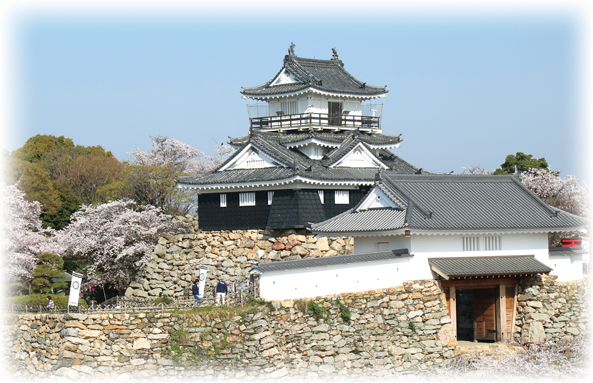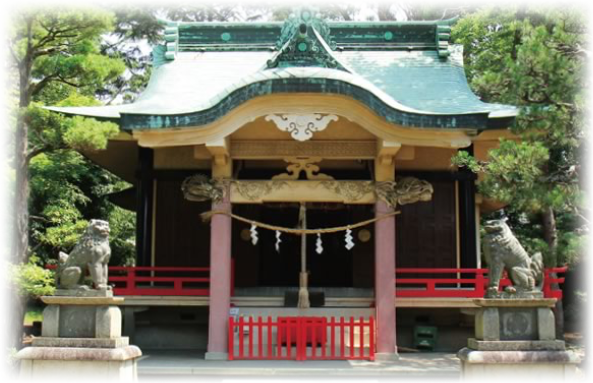



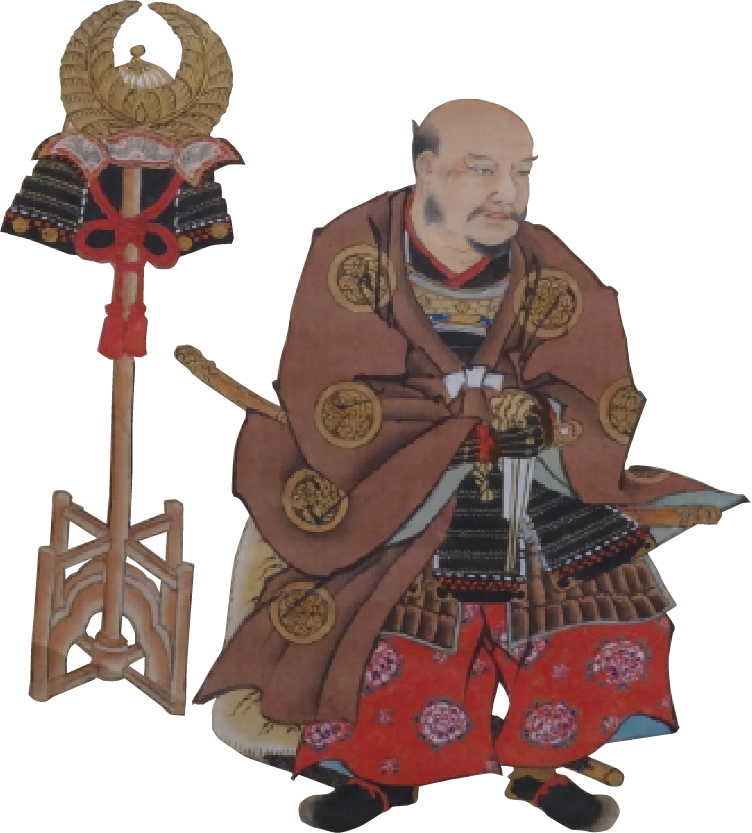
The history of Hamamatsu, a city of success
What is the meaning of “Success?”
Tokugawa Ieyasu spent ages 29 to 45 living in Hamamatsu, and these years laid the foundation for him to become the influential figure that he became. Subsequent Hamamatsu castle owners also rose to important positions within the Edo Shogunate. In the modern era, Hamamatsu persisted as a town of manufacturing, as global companies were born and fostered here one after another, utilizing the yaramaika spirit - the driving urge to action over hesitation that is unique to Hamamatsu’s local culture.


Tokugawa Ieyasu spent 17 years of his youth at Hamamatsu Castle, which became famous later as the "Castle of Success."
Tokugawa Ieyasu built Hamamatsu Castle in 1570 and spent 17 years there in the prime of his life from 29 to 45. During this period, Ieyasu learned many things through a series of tribulations such as the Battle of Mikatagahara, which can be deemed to be the greatest defeat in his life, as he began to take his first steps to conquer the country from his base in Hamamatsu. After many successive lords of Hamamatsu Castle were selected for important positions in the shogunate during the Edo period, including positions such as "roju" (elder) and "Kyoto shoshidai" (Kyoto deputy), the castle became known as the "Castle of Success." Hamamatsu Castle was one of several spots to become famous power spots.
Tokugawa Ieyasu is the most famous military commander in Japan. He emerged victorious in the Battle of Sekigahara in 1600 and unified Japan, ending a turbulent period of war that lasted around 100 years from the end of the 15th century. He established the shogunate (military government) in Edo (currently Japan's capital, Tokyo) in 1603 and became its first shogun. This laid the foundation for peace and prosperity over the next 265 years.
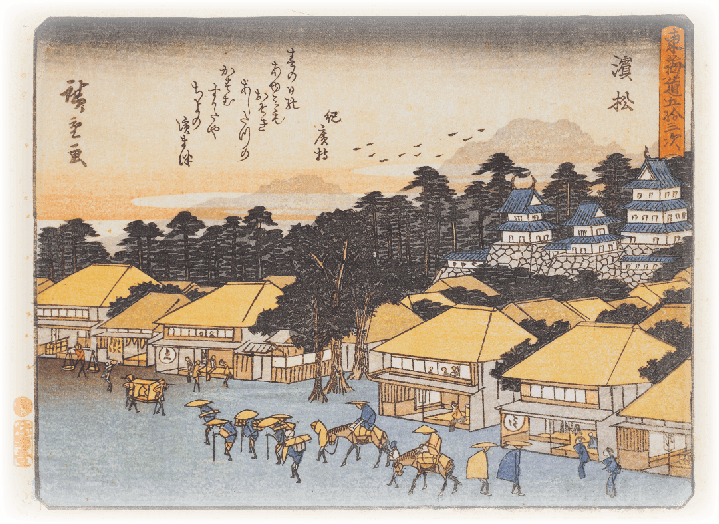
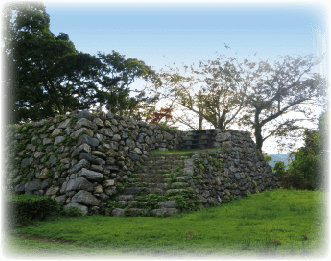
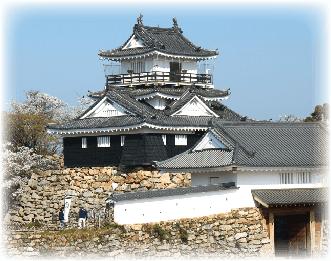


A bird's eye view of Hamamatsu (Overview)
Hamamatsu is a highly accessible city located in the center of Japan.
Known as a city of success whose residents are not afraid to give things a go, Hamamatsu also has a reputation for its vibrant natural surroundings and delicious food.
Home to a population of around 800,000 residents, Hamamatsu is also the second largest ordinance-designated city in Japan in terms of area. Located almost in the center of Japan, the city is approximately 90 minutes from both Tokyo and Osaka by the Shinkansen. In addition to its extensive railway network, Hamamatsu is also accessible by the highway and by air.
It is an industrial city with a large concentration of internationally renowned major corporations, as well as SMEs and venture companies that possess unique, state-of-the-art technology.
Moreover, Hamamatsu is blessed with abundant nature, featuring sites such as the Tenryu River, Lake Hamana, Sea of Enshu, Tenryu Forest, etc. The area's mild climate and long hours of sunlight throughout the year make it an attractive city that boasts delicious ingredients harvested from its sea, land, and mountains.
Hamamatsu has recently become popular as a sightseeing spot where visitors can enjoy its vibrant nature and delicious food, take part in water sports on Lake Hamana and the sea of Enshu, and tour historical landmarks with deep connections to Tokugawa Ieyasu.


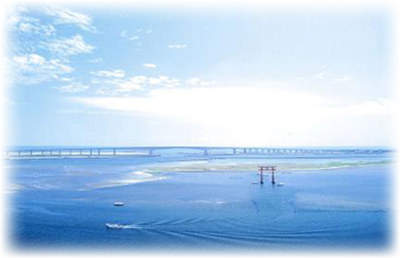
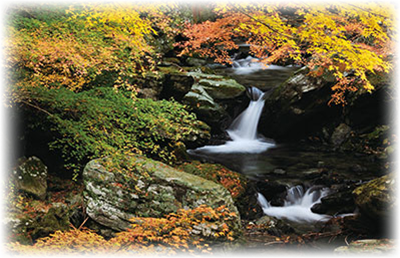


Hamamatsu was the place where Ieyasu laid the foundation for the unification of Japan!
The Totomi Province was the first territory he conquered on his own after establishing control over Mikawa, a province inherited from his ancestors. Ieyasu then built Hamamatsu Castle as a base that would play a decisive role in his expansion plans. He spent the prime of his life from 29 to 45 at Hamamatsu Castle, where he fought in a series of battles where he clashed with other famous military commanders, including the Battle of Anegawa and the Battle of Mikatagahara. These experiences allowed Ieyasu to develop strong bonds with his vassals and accumulate the power necessary for unifying the country.
Hamamatsu is home to many historical landmarks
with deep connections to Tokugawa Ieyasu,
who had spent 17 years here in the prime of his life


A Chronology of Ieyasu's Life
Tokugawa Ieyasu
Ieyasu spent 17 years in the prime of his life building Hamamatsu Castle and accumulating power.
●:Years when Ieyasu was based in Hamamatsu Castle
- 1542(Tenbun 11)
- ●
- Born in Okazaki as the eldest son of Matsudaira Hirotada, lord of Okazaki Castle in Mikawa Province. (1 year old)
- 1547(Tenbun 16)
- ●
- Abducted as a hostage on his way to Sunpu and sent to Owari. (6 years old)
- 1549(Tenbun 18)
- ●
- Hirotada (Ieyasu's father) assassinated. Taken hostage by Imagawa Yoshimoto and sent to Sunpu. (8 years old)
- 1557(Koji 3)
- ●
- Married Lady Tsukiyama, daughter of Sekiguchi Yoshihiro, a senior vassal of the Imagawa clan. (16 years old)
- 1559(Eiroku 2)
- ●
- Returned to Okazaki to visit his father's grave. Nobuyasu, his first son, was born. (18 years old)
- 1560(Eiroku 3)
- ●
- Oda Nobunaga defeated Imagawa Yoshimoto in the Battle of Okehazama. (19 years old)
- 1563(Eiroku 6)
- ●
- Nobuyasu, his first son, engaged Tokuhime, Nobunaga's daughter. Changed his name from Motoyasu to Ieyasu.
Suppressed the Mikawa Ikko-Ikki rebellion. (22 years old)


●:Years when Ieyasu was based in Hamamatsu Castle
- 1566(Eiroku 9)
- ●
- Unified Mikawa Province by seizing control of Higashi-Mikawa and Oku-Mikawa. Changed his family name to Tokugawa and appointed as the Lord of Mikawa by the Imperial Court. (25 years old)
- 1568(Eiroku 11)
- ●
- Launched an expansion campaign in Totomi Province and entered into an agreement with Takeda Shingen on the apportionment of Suruga Province and Totomi Province. (27 years old)
- 1570(Genki 1)
- ●
- Participated in the Battle of Anegawa with the support of Oda Nobunaga and defeated the Azai and Asakura forces.
Relocated from Okazaki to Hamamatsu, where he built Hamamatsu Castle and established it as his main castle. (29 years old)
- 1572(Genki 3)
- ●
- Takeda Shingen launched his invasion of Totomi Province and Mikawa Province (Takeda's westward operation).
Defeated by Takeda's forces at the Battle of Hitokotozaka and the Battle of Futamata-jo Castle. Suffered a crushing defeat at the Battle of Mikatagahara. (31 years old)
- 1573(Genki 4)
- ●
- Shingen died of illness (53 years old). Muromachi Shogunate fell. Led Honda Tadakatsu and others to attack Nagashino Castle. (32 years old)
- 1574(Tensho 2)
- ●
- Hideyasu (later Yuki Hideyasu), his second son, was born. Hideyasu's mother was Oman-no-kata, Ieyasu's concubine. (33 years old)
- 1575(Tensho 3)
- ●
- Allied with Oda Nobunaga and defeated Takeda Katsuyori at the Battle of Nagashino. (34 years old)


●:Years when Ieyasu was based in Hamamatsu Castle
- 1579(Tensho 7)
- ●
- Hidetada (later Tokugawa Hidetada, the second shogun of the Tokugawa Shogunate), his third son, was born.
Killed his wife, Tsukiyama Gozen, at the order of Nobunaga. Ordered his eldest son, Nobuyasu, to commit suicide. (38 years old)
- 1581(Tensho 9)
- ●
- Captured Takatenjin Castle from the Takeda clan and took full control of Totomi Province. (40 years old)
- 1582(Tensho 10)
- ●
- Gained control over Suruga Province with the fall of the Takeda clan. Nobunaga committed suicide at the Honnoji Incident.
Crossed the Iga Province from Sakai to return to Okazaki.
Conquered Kai and Shinano Provinces after the death of Nobunaga and became the daimyo of five provinces. (41 years old)
- 1584(Tensho 12)
- ●
- Negotiated a truce with Hideyoshi at Komaki and Nagakute (Battle of Komaki and Nagakute). (43 years old)
- 1586(Tensho 14)
- ●
- Relocated from Hamamatsu Castle to Sunpu Castle.
Married Asahihime, Hideyoshi's younger sister. Granted an audience with Hideyoshi at Osaka Castle. (45 years old)


●:Years when Ieyasu was based in Hamamatsu Castle
- 1590(Tensho 18)
- ●
- Led the siege during the Odawara Campaign. Took up residence in Edo Castle on the transfer order of Hideyoshi. (49 years old)
- 1600(Keicho 5)
- ●
- Launched a campaign against Uesugi Kagekatsu in Aizu. Defeated Ishida Mitsunari's forces at Sekigahara (Battle of Sekigahara). (59 years old)
- 1603(Keicho 8)
- ●
- Received the title of shogun and established the Edo shogunate. (62 years old)
- 1605(Keicho 10)
- ●
- Abdicated the title of shogun to Hidetada but remained influential. (64 years old)
- 1607(Keicho 12)
- ●
- Built Sunpu Castle, where he retired. (66 years old)
- 1615(Keicho 20)
- ●
- Launched the Summer Siege of Osaka. Yodo-dono and Hideyori committed suicide, and the Toyotomi clan fell. (74 years old)
- 1616(Genna 2)
- ●
- Appointed as Grand Minister by the Imperial Court. Died of illness at Sunpu Castle on April 17th and buried on Kunozan. (75 years old)



